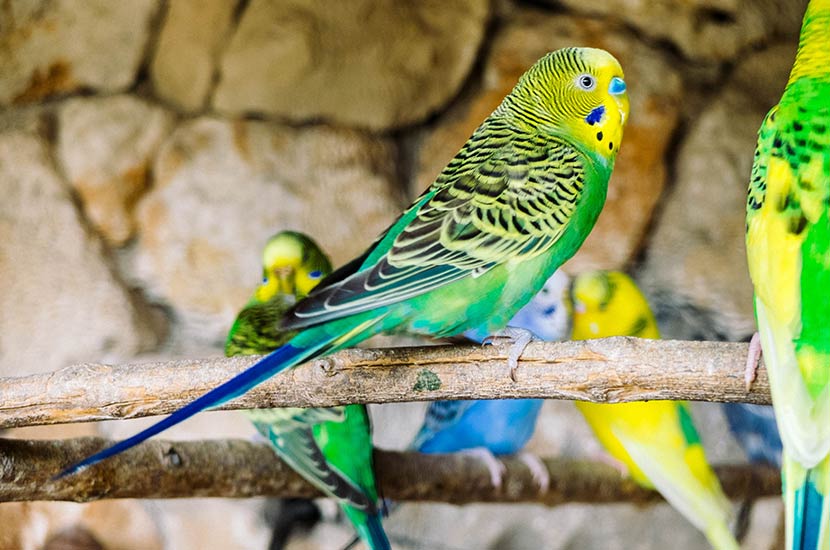Going Home with a Wing or leg Injury, What You Need to Know
Special precautions should be taken to reduce that chance of further injury.
The bird should not be returned to a cage or enclosure which provides climbing surfaces. A bird that had been flying may not realize it can no longer fly and leap from a high position causing further injury.
An aquarium or terrarium tank is a safer environment. The bird can’t climb the smooth sides, you can watch the bird, and the bird can see out. The tank should have a screened top so the bird has air but can’t escape. The top should fasten or be weighted down to prevent the bird from opening it. The tank should be large enough so the bird can move around, and deep enough so the bird can’t hop up to the rim when the top is temporarily removed.
For a budgie, a minimum sized tank would be about 9 by 12 inches and 10 inches deep. A bigger bird needs a larger tank.
The bottom of the tank should be well padded to minimize injury to the bird. The material should be easy to replace when soiled. Many layers of thick paper towels can be used. When using cloth, be sure the bird’s nails are clipped to avoid hooking the cloth.
Food and water containers must be down low where the bird can easily reach them. Containers that rest on the floor of the tank can be used. Hooded containers reduce the chance of the bird soiling the food or water if the bird perches on the container. Make sure the bird’s wing or leg bandage doesn’t prevent it from eating and drinking from its food and water containers. The shape of the container shouldn’t provide an easy surface onto which the bird can climb or perch.
A perch should be provided that is near the bottom of the tank. A self standing perch can be purchased or home made. For example for a budgie, cut a 3 inch circle of heavy cardboard exactly in half (through its diameter). Cut a wooden perch to about 3 inches long. Drive a small nail or tack through each cardboard piece at a point farthest from the straight side. Then drive the nails or tacks into the ends of the perch. The cardboard pieces are now stands on the ends of the perch.
If the bird is returned to a room with other birds, it should only be for a few hours a day, and the injured bird’s reaction should be monitored closely. Some distraction will probably reduce boredom during recuperation. But the injured bird shouldn’t become overly excited, or encouraged to try to escape it’s tank or chew off its bandage. This can easily happen if other birds are very active or flying around the room. In this case, the injured bird should be moved to another room. The bird’s bandage should be inspected frequently. If it become loose or wet, contact the veterinarian immediately.
Thank you for giving us the opportunity to provide helpful service to you and your pet. If you have any questions, give us a call at (502) 241-4117.

